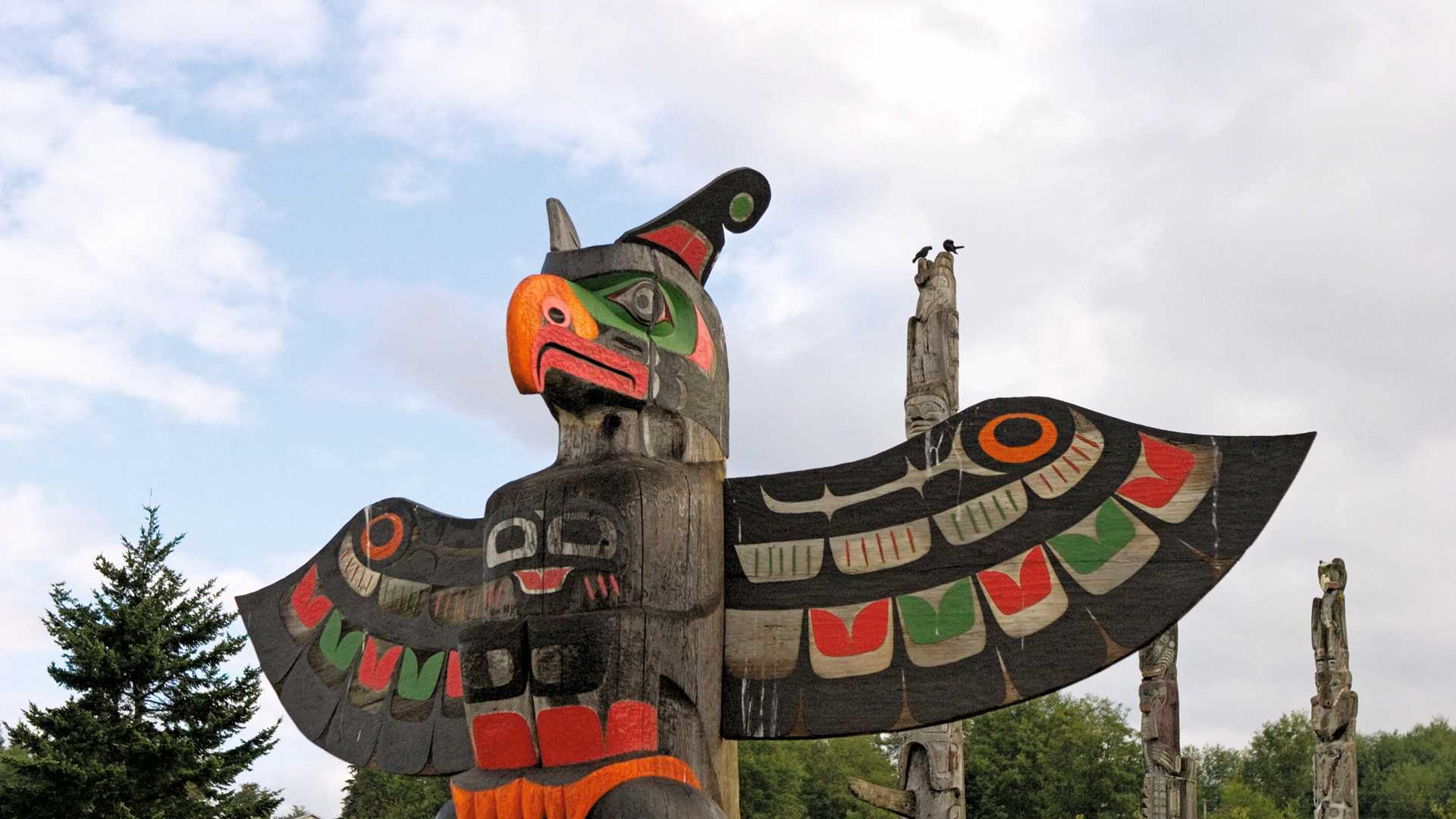Apr 2015
7 Min Read

In February 2019, we were honored to have some very special guests join us in our New York office. A multi-generational group of Kwakwaka’wakw chiefs, elders, and artists from the U’mista Cultural Centre in Alert Bay, British Columbia shared traditional song and dance with our staff in appreciation for our longstanding support of their community. Get Inspired By Photos, Videos, Webinars, Stories, And Exclusive Offers. Sign Up
Our relationship with this First Nations community runs deep—we’ve been bringing guests to Alert Bay for 30 years and introducing them to the Kwakwaka’wakw's culture, history, and traditions. At the U’mista Cultural Centre—which our ships visited 12 times in 2019—guests are treated to a similar performance by a larger group of singers and dancers from the Kwakwaka’wakw First Nations in their spectacular ceremonial Big House. Guests also have the opportunity to visit exhibits on display, including the world-renowned Potlatch Collection which includes ceremonial regalia surrendered under duress in 1922 during the era when the potlatch ceremony was illegal in Canada.
Our CEO Sven Lindblad is presented with a ceremonial drum from Elder Eva Dick as several Lindblad staffers look on. The word "potlatch" means to give and one of the most unique aspects of the ceremony is the distribution of gifts to all invited guests. Photo by Desirea Corbett.
Members of the community made the trip to New York for the opening of a new exhibit at the Bard Graduate Center (BGC) Gallery that holds a great deal of personal meaning for them. “The Story Box: Franz Boas, George Hunt and the Making of Anthropology”—co-produced by the BGC and the U'mista Cultural Centre—features ceremonial objects from the Kwakwaka’wakw as well as rare archival photographs, manuscripts, and drawings that shed new light on Franz Boas’s influential book, The Social Organization and the Secret Societies of the Kwakiutl Indians, and on his Indigenous co-author George Hunt. A number of delegates who visited New York, including the exhibit’s contributing designer Corrine Hunt, are direct descendants of George Hunt.
Attributed to Albert Grünwedel, painter. Kwakwaka’wakw Transformation Mask (opened, left image; closed, right image) with notes by Franz Boas. Paper, ink, paint (watercolor). Courtesy of the Division of Anthropology, American Museum of Natural History.
“This exhibit is an introduction to our larger project to produce a new edition of this really influential book in the history of anthropology,” explains curator and associate professor at Bard, Aaron Glass. “Our goal is to tell these hidden histories of the condition of the book’s own making, and primarily of George Hunt’s role as a co-author of the book, and as the author of decades of notes attempting to correct and expand the book. But we also have an additional goal to return all of Hunt’s knowledge to contemporary Kwakwaka’wakw families, so they can reconnect to all this heritage material that’s scattered all over the world in museums, archives, and libraries.”
Most representatives from the Kwakwaka’wakw delegation at the World's Columbian Exposition, Chicago, 1893. They stand before the painted facade of a Hope Island house in which Franz Boas first stayed in 1886. Courtesy of the Peabody Museum of Archaeology and Ethnology, Harvard University.
After New York the exhibit heads to U’mista for three months, from July 20-October 26. We are proud to help the Kwakwaka’wakw pass down their knowledge and support the survival of their cultural heritage—so in conjunction with the exhibit the Lindblad Expeditions-National Geographic Artisan Fund is contributing to a community-based art project related to a protocol for a rattle dance that involves 12-24 rattles featured in Boas’s book. Master artist Wayne Alfred, who is also a descendant of Hunt, will mentor apprentice artists to help replicate these rattles. Ultimately the rattles will become part of U’mista’s loan collection for ceremonial use by local families during Potlatch ceremonies.
Travel can be a dynamic tool for change and we were thrilled to hear Kwakwaka’wakw Chief K’odi Nelson share these thoughts with us on the power of eco-tourism: “We are now realizing what this sector can do for our people in terms of much-needed jobs and also teaching our children to be proud of who we are and where we come from. They look forward to getting up in the morning when the Lindblad ships are coming to our community and this is the impact that is happening here for us.”
To visit the U'mista Cultural Centre join us on our Treasures of the Inside Passage or Exploring British Columbia & the San Juan Islands voyages.Find out more about U'mista and the Kwakwaka’wakw at umistapotlatch.ca.